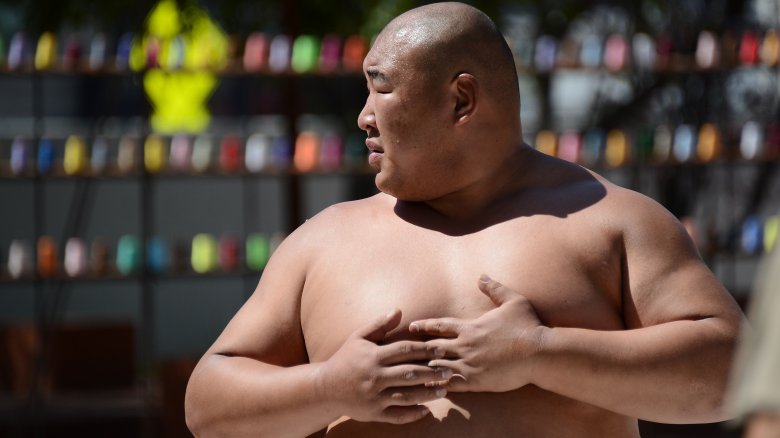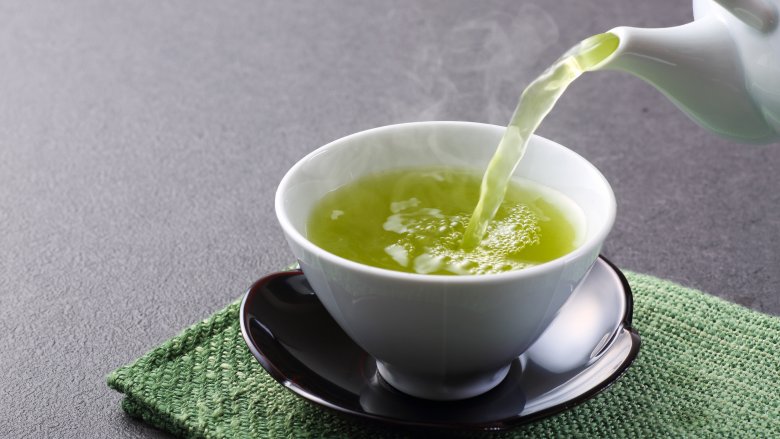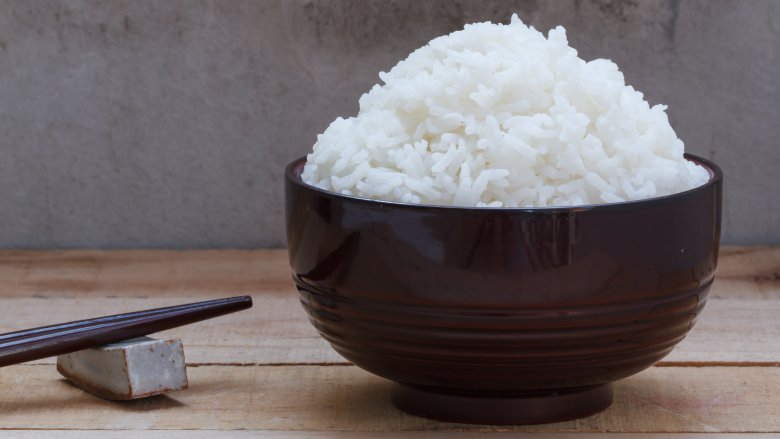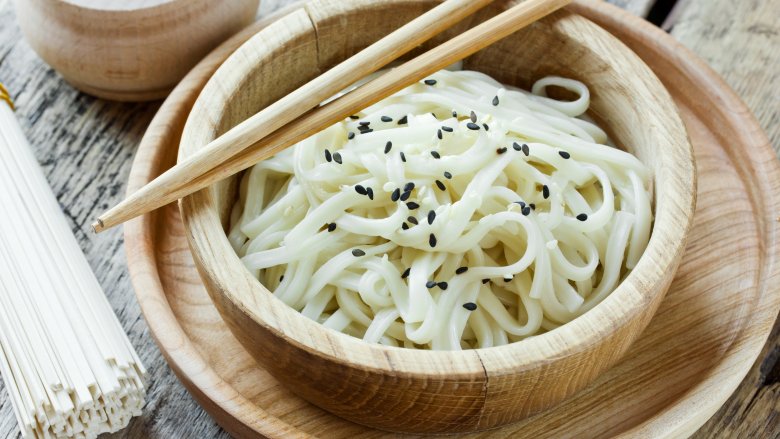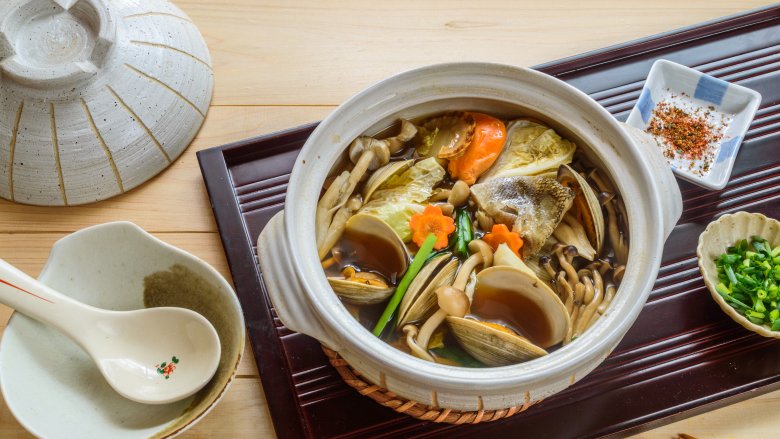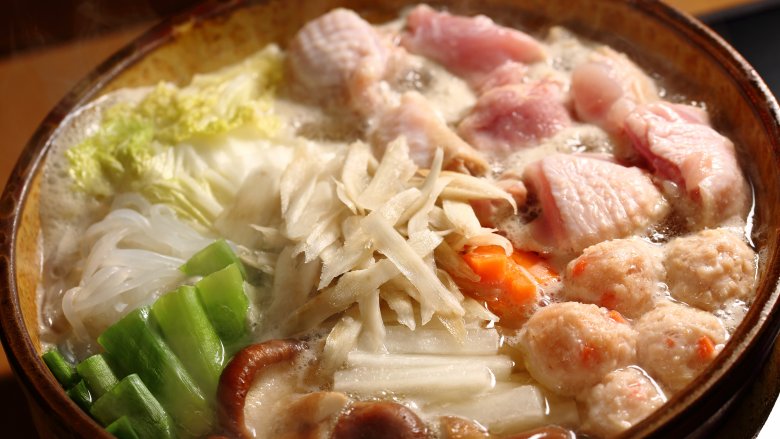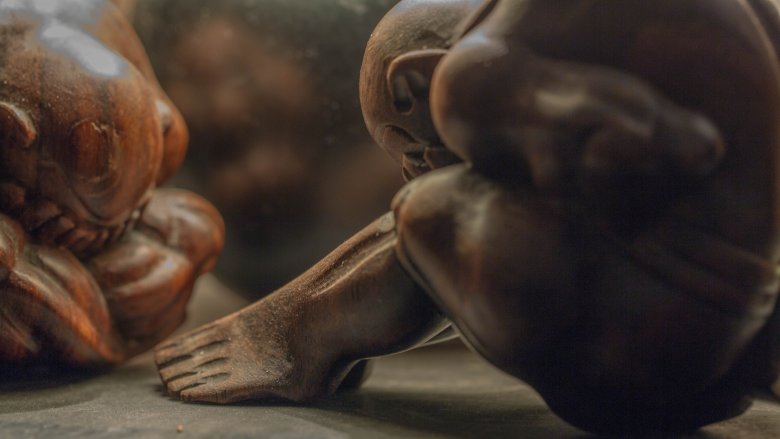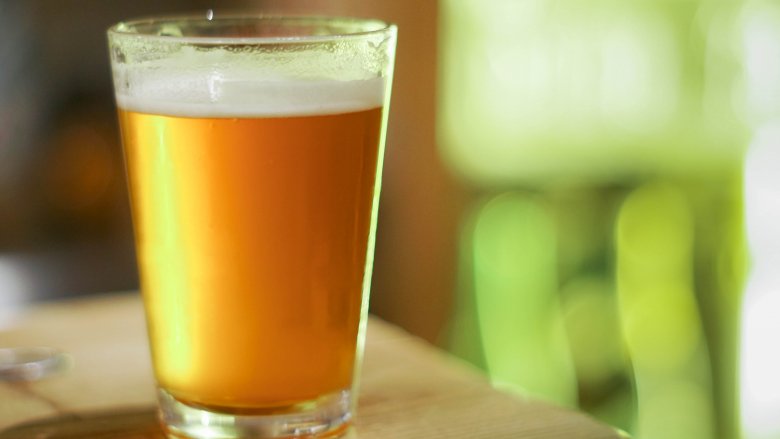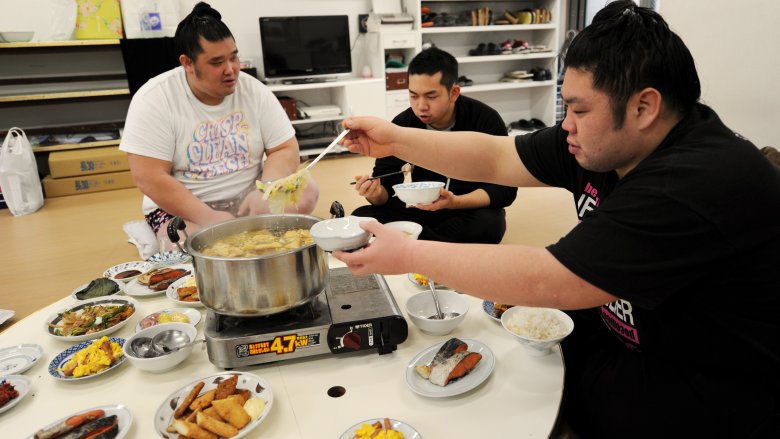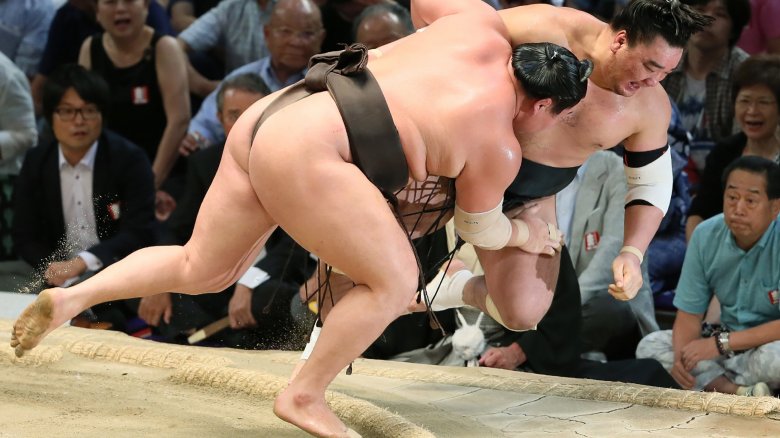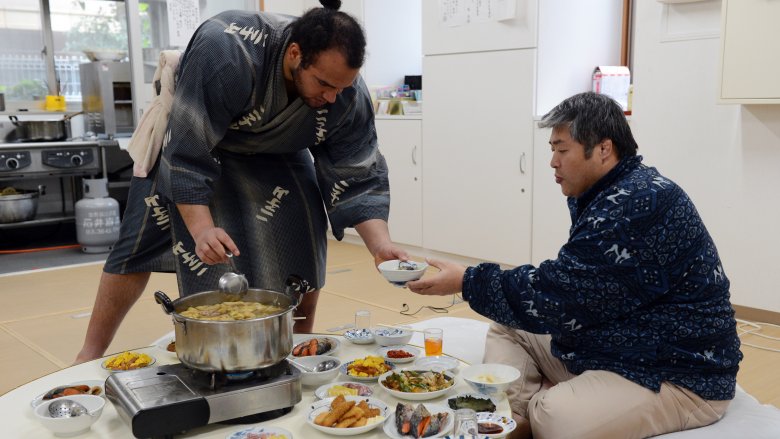How To Eat Like A Sumo Wrestler
It's no secret that athletes of all shapes and sizes spend a huge amount of time perfecting their diets and training to get themselves in peak performing shape. Sumo wrestlers are no different — they don't just eat whatever they want to get to that size. They have a strict diet and routine they follow, and that means you can eat just a sumo wrestler does. Strangely? Some of it might even be good for you.
Their calorie intakes vary
GQ talked to Mongolian sumo wrestler Byambajav Ulambayar (pictured), who weighs in at a relatively svelte 360 pounds. He says a typical day for him involves scarfing down around 4,000 calories, and while that's two or three times what you might be eating on a daily basis, (and let's be honest, you've finished that much off at the odd party), it's still not a huge amount. He also adds, though, that since he's competing every other month all year around, there's no off-season for training or his diet.
Different wrestlers have different dietary requirement, and when NPR spoke with president of the US Sumo Federation Andrew Freund, he said the typical calorie intake for a sumo wrestler was somewhere between 5,000 and 8,000 calories. Others have reported numbers as high as 10,000, and just let that sink in for a minute!
Water and green tea are a must
Hydration is key to the sumo wrestler's diet, because in between all that eating are some seriously grueling training sessions. According to what repeat World Sumo Championship winner Byambajav Ulambayar told Grub Street, one of the biggest, most important parts of his daily intake is a ton of water and plenty of green tea.
It's absolutely crucial, too, because Ulambayar says he typically loses between 10 and 15 pounds in sweat alone during his morning workout. Hydration, hydration, hydration!
Pack on the rice
Byambajav Ulambayar told Grub Street that rice is another key part of the sumo wrestler diet, and they eat bowls and bowls of it at a time. It's all to add on more calories, and even sumo wrestlers-in-training use rice as a way to pack on the pounds and help give them a competitive edge.
According to Spiegel Online, the world of sumo is often a legitimate option for boys from poor, rural families, and it's a way for them to escape the often inevitable option of following in their parents' footsteps. Rice is a part of that from the beginning, and boys like Seiya Kato average six bowls of rice a day before they've even become teenagers.
Grow a love for udon noodles
For Byambajav Ulambayar (via GQ), udon noodles are also key. They're a big portion of his dinners, which usually also include other healthy foods like fish and salad. This is one traditional food that you'll be able to find in almost any grocery store in any country now, as it's taken the world by storm. In 2016, The Independent took an in-depth look at the growing popularity of udon noodles, a flavorless, white flour noodle. An almost suffocating amount of advertising helped lead to the increased profile of the elastic noodles, and they're now global.
Try some chanko-nabe
If you really want to eat like a sumo wrestler, there's one dish you have to try. One Slate reporter Franz Lidz called "exuberantly revolting," it's served at a mid-day meal, and it's called chanko-nabe. Lidz got to sit down with a group of sumo wrestlers for a hearty meal, and while there's a ton of different ways you can make the hearty, healthy stew, his included shiitake mushrooms, potatoes, leeks, tofu, carrots, and chicken broth. Doesn't sound so bad, does it?
Sometimes it's served alone and sometimes it's served with rice or side dishes like omelets and dumplings, and while it's a pretty healthy meal it also allows them to pack on the calories with bowl after bowl... after bowl. It's been a staple of the sumo wrestler's diet since at least the 19th century, and it's such an important component of their lifestyle it's called a "legal steroid."
While all wrestlers down multiple bowls, there's a clear record-holder for the most eaten in a single sitting. That honor goes to a man named Takamisugi, who downed a shocking 65 bowls. That includes a whopping 29 pounds of beef, and apparently he only stopped because he was tired of chewing. That's some serious dedication.
Competition days are chicken-only
Chanko-nabe can be made with any kind of meat, including beef and fish. NPR says there are at least 100 different versions of the stew, and each chef has their own signature. While there aren't many rules about what can go into the pot (aside from the fact it usually contains one protein and a ton of vegetables), there's one guideline that's rooted in age-old thinking. On competition days, sumo wrestlers will only eat chicken chanko-nabe, and it's not for nutritional reasons. It's because chicken only walk with two feet on the ground, and that's how sumo wrestlers are going to win — by keeping two feet planted squarely on the ground. Hands and feet would make four legs, and that would mean a loss.
Sleep after meals
Sumo wrestlers have mass rather than fat, and when you look at their numbers on the body mass index charts, they're among the healthiest of all athletes. According to a report by the Asia Pacific Journal of Sports and Social Science (via Science Daily), they don't just eat to pack on the pounds, they have strategic methods of eating.
That involves doing something you've probably heard you should never do if you're trying to lose weight: sleeping right after you eat. According to Slate, a sumo wrestler's massive, mid-day lunch of chanko-nabe is not only made up of multiple bowls of soup, but it's followed by a good, long nap. This might be the easiest part of the entire routine to get on board with.
Skip the junk food, but don't forget to pass the beer
A report by the Asia Pacific Journal of Sports and Social Science (via Science Daily) looked at just how nutritious a sumo wrestler's diet is, and they found that quantity aside, it's pretty healthy. Chanko-nabe gives them all the protein and nutrients they need in a single dish, and in spite of their hefty girth, one thing they're missing from their diets is all the sugary, processed foods that make most Westerners pack on the pounds.
According to what Byambajav Ulambayar told GQ, sugary sweets and other kinds of junk food just aren't on the menu, and he doesn't miss it at all. That's not to say they don't indulge, though, and Ulambayar also says beer is one of the must-have loves of almost any sumo wrestler.
Skip breakfast, and only eat twice a day
Only part of a sumo wrestler's diet has to do with what they're actually eating, and anthropologist R. Kenji Tierney documented the rest in a report in the Asia Pacific Journal of Sport and Social Science (via The Boston Globe). Training days are year-around, and they're restricted to a tightly managed schedule that's put in place to help maximize the pounds they're putting on. It's easier said than done, as there's also a ton of physical training, exercise, and calorie-burning.
In order to help keep weight on, sumo wrestlers skip breakfast in spite of getting up early. They spend their mornings training, eat their first massive meal around 11 am, and then only eat again once. That's said to help slow their metabolism and turn a lot of the calories they're consuming into weight instead of just burning it off during their intense training sessions. Basically, they do everything you're told not to do if you're trying to maintain your weight or lose some pounds.
How sumo wrestlers are heavy without suffering the ill effects of obesity
No one can argue the fact that a sumo wrestler is a heavy, heavy person. Most weigh somewhere between 300 and 400 pounds, and you'd expect them to be suffering from serious ill effects stemming from their weight. But Medium took a look at just how all those pounds, all those calories, and that lifestyle impacted them, and found that they're largely unaffected by things like high cholesterol and diabetes.
Basically, it's all down to exercise. Sumo wrestlers store their weight differently than the rest of us, packing on the extra weight immediately under their skin instead of deeper inside their bodies. Their meal schedule keeps the pounds on, but their rigorous training and exercise regimen keeps them from developing what's called visceral fat — the kind of fat the normal, every-person struggles with. When they stop their training, they'll start accumulating all the problems that go along with being overweight, but until then, they're in ridiculously good shape — extra pounds included.
Chanko-nabe for the general public
In 1937, a retired sumo wrestler opened the first restaurant serving chanko-nabe, according to food journalist Otani Hiromi. It wasn't until after World War II that chanko-nabe restaurants really went mainstream, and since Japan Travel says many of today's chanko-nabe joints are operated by former sumo wrestlers, you know you're getting the real thing when you go there.
They also say there are a ton of legitimately delicious options when it comes to getting authentic chanko-nabe, especially in places like Hananomai Ryogoku Kokugikanmae Ten. It's so authentic there's even a sumo ring in the middle of the restaurant and if you're lucky, they'll be holding events there when you stop by.
